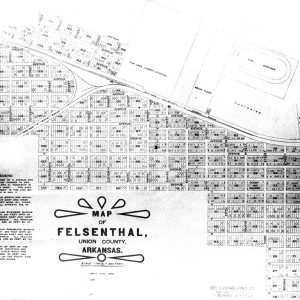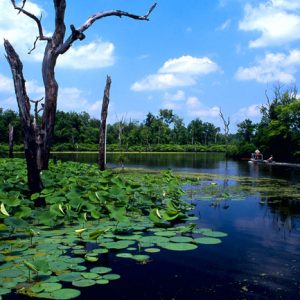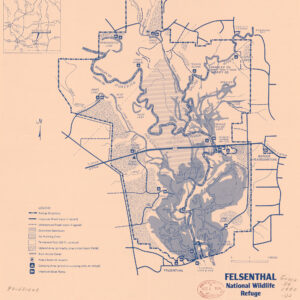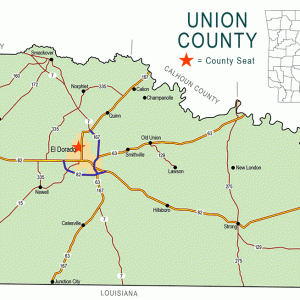calsfoundation@cals.org
Felsenthal (Union County)
| Latitude and Longitude: | 33°03’34″N 092°09’24″W |
| Elevation: | 82 feet |
| Area: | 1.48 square miles (2020 Census) |
| Population: | 85 (2020 Census) |
| Incorporation Date: | July 6, 1904 |
Historical Population as per the U.S. Census:
|
1810 |
1820 |
1830 |
1840 |
1850 |
1860 |
1870 |
1880 |
1890 |
1900 |
|
– |
– |
– |
– |
– |
– |
– |
– |
– |
– |
|
1910 |
1920 |
1930 |
1940 |
1950 |
1960 |
1970 |
1980 |
1990 |
2000 |
|
273 |
167 |
208 |
203 |
– |
– |
158 |
220 |
95 |
152 |
|
2010 |
2020 |
|
|
|
|
|
|
|
|
|
150 |
85 |
|
|
|
|
|
|
|
|
Felsenthal is near the Saline River’s termination into the Ouachita River in southeastern Union County, just north of the Louisiana state line. It was an important location for the local lumber industry, but since 1975 has prospered due to tourism, including hunters and fishers.
David Felsenthal, a Jew born in Bavaria (now part of Germany) in 1833, moved to Arkansas when he was twenty years old. He lived first in Woodlawn (Ouachita County) and then moved to Camden (Ouachita County). He and his wife had nine children, four of whom—Adolph, Isaac, Sidney, and Lee—formed the Felsenthal Land and Timber Company around the beginning of the twentieth century to harvest the trees of southern Union County.
Some sources report that the family established a company town for their workers and workers’ families, naming the town Felsenthal. However, in a 1932 article in the Huttig News, Adolph Felsenthal writes that the genesis of the town lay in his seeing a 1902 news report on the St. Louis, Iron Mountain and Southern Railroad planning an extension of its line from El Dorado (Union County) to Bastrop, Louisiana. He realized the commercial potential in the place where the proposed extension of the railroad would cross the Ouachita River and so purchased 1,200 acres of land in the area, which was the only river and rail point between Camden and Monroe, Louisiana.
The post office opened in 1903, and the town was incorporated in 1904. A sawmill soon opened, and a newspaper, the Felsenthal Press, was established. Two excursion trains brought prospective buyers to the town, including Governor Jeff Davis in 1904. During the lumber boom, the town had public schools, a bank, an opera house, three hotels, a brick company, and two newspapers. The town also had a baseball team. Felsenthal leaders pressed the Arkansas General Assembly to make their town a second county seat for Union County, but although the bill passed and overcame a veto by Gov. Davis, the matter ended up in the courts, with El Dorado leaders opposing the plan, and soon the legislature wiped out plans for a second district in the county. Flooding in 1907 also damaged the new town’s prospects. The nearby city of Huttig (Union County), established by the Frost-Johnson timber company about the same time as Felsenthal, proved to be more successful at attracting and keeping businesses. Felsenthal became unincorporated in 1911, though it later reincorporated. The post office closed in 1969.
In 1975, the Felsenthal National Wildlife Refuge was established in Union, Bradley, and Ashley counties. Consisting of 65,000 acres, the refuge preserves a network of lakes, sloughs, and bayous as well as forests of hardwood trees. Felsenthal reincorporated in 1978. In 1984, the Felsenthal lock and dam on the Ouachita River were completed, regulating the deliberate flooding of the refuge for the benefit of trees and wildlife, as well as creating Lake Jack Lee. Cabins were built in Felsenthal for tourists, and a new sewer system was installed. Despite the dam, flooding remains a problem for the community.
By 1987, the town consisted of 150 permanent residences and welcomed an average of 1,200 visitors each weekend. In 1985, the town sponsored its first Bream Fest, a fishing tournament held over a weekend in late May. The festival also has a water slide and obstacle course for children, live music, food and craft vendors, a horseshoe tourney, and bingo.
By 2015, Felsenthal had a two Baptist churches, a campground, and a recreational site. Residents and visitors generally travel to El Dorado or Crossett (Ashley County) for shopping, restaurants, and other amenities. Students attend school in the Strong-Huttig School District.
For additional information:
Felsenthal, Arkansas. http://felsenthal-ar.com/index.html (accessed May 28, 2022).
Felsenthal, Adolph. “Felsenthal Has Trade Advantage as Nearest Ouachita River Point to All Points on Gulf of Mexico.” Huttig News, June 30, 1932, p. 4.
LeMaster, Carolyn Gray. A Corner of the Tapestry: A History of the Jewish Experience in Arkansas, 1820s–1990s. Fayetteville: University of Arkansas Press, 1994.
Steven Teske
Butler Center for Arkansas Studies
 Felsenthal Map
Felsenthal Map  Felsenthal National Wildlife Refuge
Felsenthal National Wildlife Refuge  Felsenthal Refuge Map
Felsenthal Refuge Map  Felsenthal Sign
Felsenthal Sign  Felsenthal Structures
Felsenthal Structures  Union County Map
Union County Map 




Comments
No comments on this entry yet.